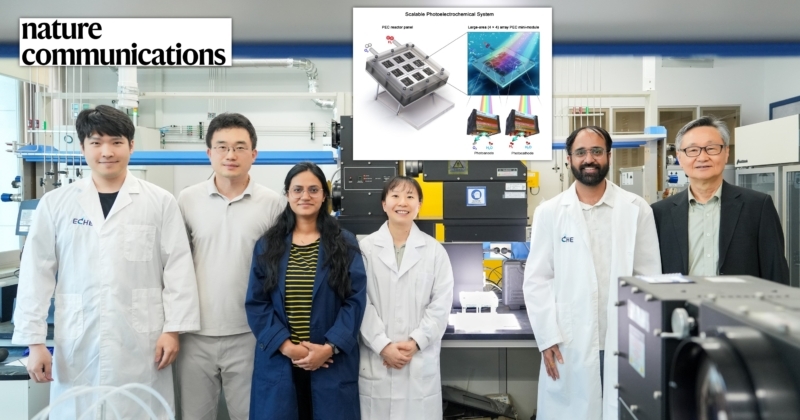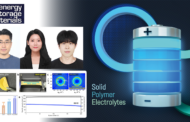A research team, affiliated with UNIST has introduced a cutting-edge modular artificial leaf that simultaneously meets high efficiency, long-term stability, and scalability requirements—marking a major step forward in green hydrogen production technology essential for achieving carbon neutrality.
Jointly led by Professors Jae Sung Lee, Sang Il Seok, and Ji-Wook Jang from the School of Energy and Chemical Engineering, this innovative system mimics natural leaves by producing hydrogen solely from sunlight and water, without requiring external power sources or emitting carbon dioxide during the process—a clean hydrogen production method.
Unlike conventional photovoltaic-electrochemical (PV-EC) systems, which generate electricity before producing hydrogen, this direct solar-to-chemical conversion approach reduces losses associated with electrical resistance and minimizes installation footprint. However, prior challenges related to low efficiency, durability, and scalability hindered commercial deployment.
To address these issues, the research team fabricated high-performance, 1 cm² perovskite-based photoelectrodes utilizing a chlorine-doped formamidinium lead triiodide (Cl:FAPbI₃) absorber layer and ultraviolet-insensitive tin oxide (Cl:SnO₂) electron transport layers. These units were assembled into a 4×4 array, creating a scalable modular system capable of stable hydrogen generation solely from sunlight. Remarkably, the entire module achieved a solar-to-hydrogen conversion efficiency of 11.2% under unbiased, one-sun illumination—surpassing the 10% threshold widely regarded as the benchmark for commercial viability.
 Figure 1. Demonstration of a mini-module-sized large artificial leaf for solar H2 production. Shown on right is the schematic of a large mini-module-sized artificial leaf (16 cm2) prepared by 4 × 4 array design using sub-cells (each size of 1 cm2) containing 8 photoanodes and 8 photocathodes.
Figure 1. Demonstration of a mini-module-sized large artificial leaf for solar H2 production. Shown on right is the schematic of a large mini-module-sized artificial leaf (16 cm2) prepared by 4 × 4 array design using sub-cells (each size of 1 cm2) containing 8 photoanodes and 8 photocathodes.
The team attributed this high performance and stability to the strategic combination of the chlorine-doped perovskite absorber, UV-resistant electron transport layer, and nickel-iron-cobalt (NiFeCo) catalysts. To ensure durability, they applied specialized nickel foil and resin encapsulation techniques, enabling the device to operate continuously for 140 hours while retaining 99% of its initial performance.
Professor Jae Sung Lee emphasized, “This achievement goes beyond laboratory-scale demonstrations by reaching a module-level efficiency exceeding 10%, a critical milestone toward real-world application.” He further added, “The scalability of the artificial leaf into larger panels akin to photovoltaic modules signifies a decisive step toward commercial deployment.”
The findings of this research have been published in Nature Communications (Impact Factor: 14.7) on May 6, 2025. This study has been supported through the Climate Change Response Project, the Brainlink Project, and the Basic Science Research Program, funded by the Ministry of Science and ICT (MSIT), underscoring its significance in advancing sustainable energy solutions.
Journal Reference
Dharmesh Hansora, Rashmi Mehrotra, Eunseo Noh, et al., “Scalable and durable module-sized artificial leaf with a solar-to-hydrogen efficiency over 10%,” Nature Comm., (2025).












